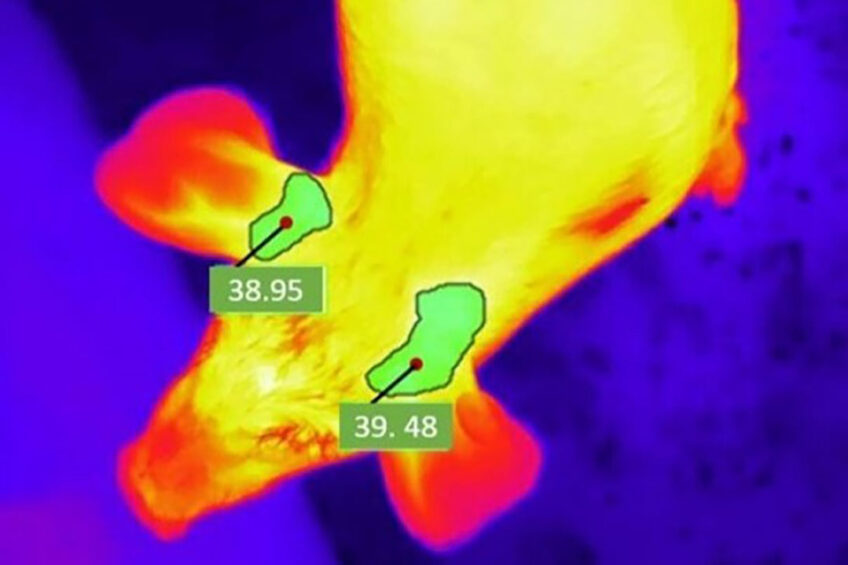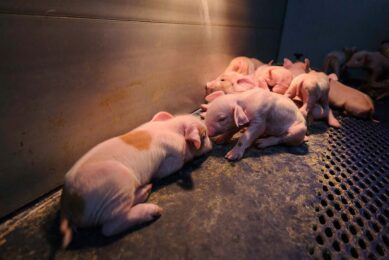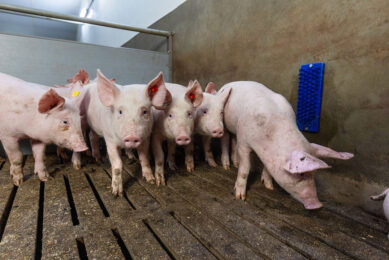Using facial skin temperature to assess pig emotions

A team of researchers in the Netherlands has embarked on a scientific journey to assess pig emotions using facial temperatures.
The research is the starting point of a project at Wageningen University & Research (WUR). In a news release at the university’s website, the university explained how the overall aim is to automatically measure and integrate more measurable components to study emotions in pigs. This will also include heart rate variability, EEG measurements, tail posture and motion, play behaviour and vocalisations.
Measuring facial skin temperature
Facial skin temperature can be measured non-invasively using a thermal imaging camera. The project team aims to develop a neural network to be able to perform that task automatically. This summer, the team chose the ear base of pigs as a starting point to extract the maximum temperature. The news article described the ear base as “an interesting area for emotion research and relatively easy to define.”
The developed model will be able to detect the ear base whenever it is quite visible in the thermal frame, and measure the maximum temperatures of both sides; left and right. The project has been running since late 2021 and should be finished by late November, 2023. A paper on the model’s development is about to be published.
Accurately assessing pig emotions
The research takes place against the background of finding ways to accurately assess pig emotions. Emotions in animals can be represented along the dimensions of valence and arousal, the news article said.
The valence dimension is about whether the emotion is regarded as positive or negative by the animal.
The arousal dimension is about how activated the animal is or the intensity of the emotion.
To measure emotions in animals, one can use the components associated with emotion: behaviour, physiology, cognition and feelings. In that context, facial skin temperature may be a promising physiological component for measuring emotional arousal and valence. The news article explained, “When aroused by, for instance, the presence of a predator or other stimuli, the sympathetic branch of the autonomic nervous system causes peripheral blood vessels to constrict to direct blood and, thereby, energy and oxygen to the core of the body where it is needed. This leads to an initial drop and subsequently an increase in temperature in the periphery of the body, such as (parts of) the face.”
“The valence state of emotions may also be indicated by facial skin temperature. The emotional valence lateralisation hypothesis proposes that left brain hemisphere activity is associated with positive emotion and the right hemisphere with negative emotion. Asymmetry in facial skin temperature (difference in temperature dynamics between, for example, left vs right ear) in response to an emotional stimulus may thus reflect lateralised brain activity and hence be a marker of valence.”











